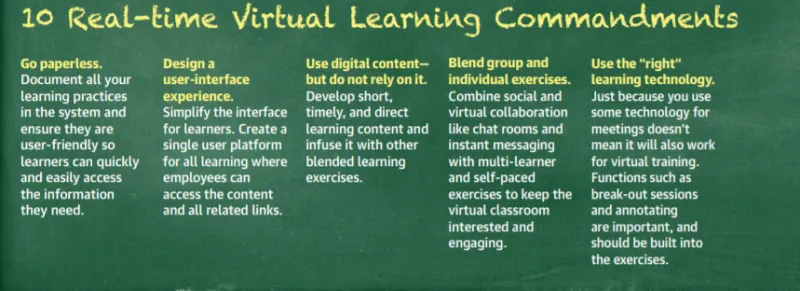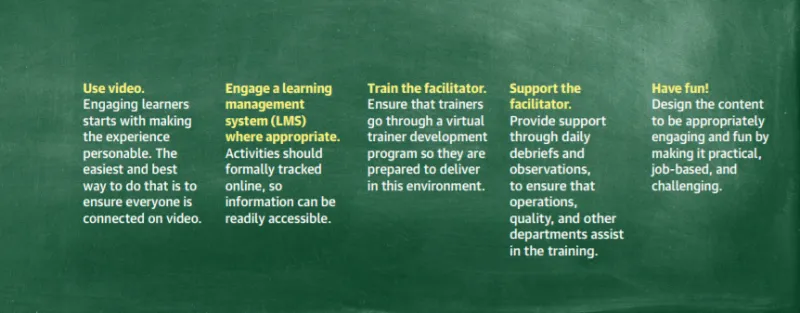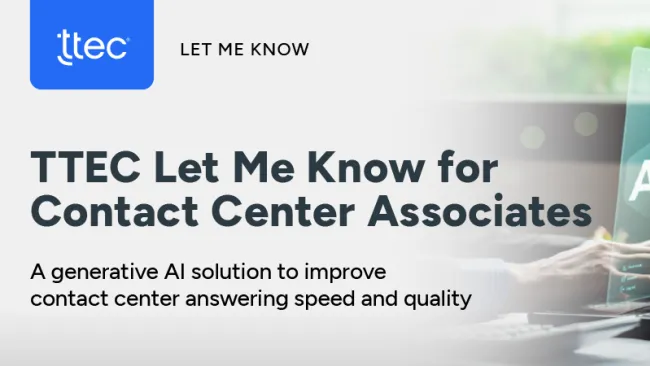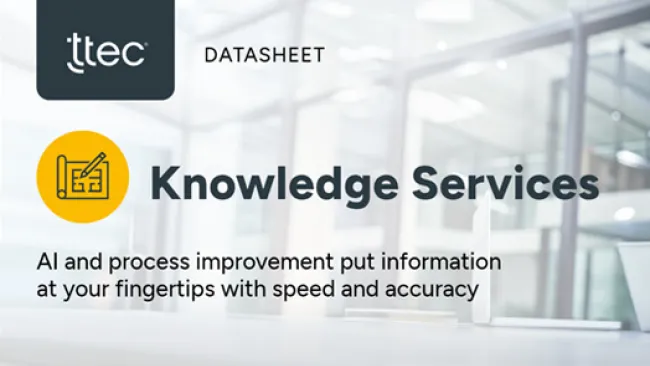What do you do when you want to learn how to change your car wiper blades or say “hello” in sign language? We’d bet that you do a search on YouTube, watch a quick video, then try it yourself. And more often than not, you probably access the videos from your phone at the exact moment you need assistance.
If this is now the standard way we learn how to do something in our personal lives, shouldn’t employee training and learning programs be structured in the same way? Real-time learning is possible and preferred by your employees. The only obstacles are tradition and the status quo.
Real-time learning is defined as the delivery of specific information to individuals when they need it. Knowledge is customized, contextual, bite-sized, and pushed (or pulled) directly to the individual at the right moment. The learner actively engages with the dynamic content, rather than passively observing static material. The information is ready for the user on-demand, and can be served up immediately. Users control the experience, going back to it when they prefer. They get constant feedback and the opportunity to continuously improve.
Real-time learning activities mix humans, self-service, automation, and artificial intelligence (AI) to engage and develop employees to excel at the highest levels.
This is the type of learning experience that employees want. Every one of your employees is a consumer, who has interacted in this way with companies like Amazon, Google, Uber, and Netflix. Personal and professional expectations are shaping into one singular expectation.
Examples applied to a learning environment include just-in-time learning activities like gamification modules featuring bite-sized lessons presented as games and levels that use interactivity to build skills and understanding. Create achievement goals, leaderboards, and unlock special rewards to encourage active participation. Social collaboration on apps and social platforms is another way to deliver learning programs in real time. And simulated scenarios can be sent directly to individual learners for them to practice as if they were handling real interactions. One-on-one personalized coaching sessions—either in person or virtually—also fit the bill (see sidebar on the 10 Virtual Learning Commandments).
Unlock real-time potential with data insight
Before enabling a real-time learning program, you must know what needs to be taught, and how to divide it into the most effective modules. Data analysis provides insight into what learners need to know, where gaps exist, and how to keep the curriculum relevant using data from performance, assessment scores, customer surveys, call monitoring, sentiment analysis, and supervisor reports. Predictive modeling and other insight-driven EX tools offer more depth into how to improve lessons in real time.
Real-time learning doesn’t mean that everything should be automated and digitized. The best programs take a hybrid approach. Self-service tools and modules can be used for more simple lessons, which saves trainers and coaches to spend time with those who need individual attention, or focus on lessons that are more complex. These interactions can also be done in real time through virtual chats and video, when the user needs it.


Break out of the classroom
Real-time learning works. We’ve seen that the approach relaxes associates who may not be comfortable with a traditional classroom environment, which leads to higher retention and performance. Yet in our experience, less than 5 percent of companies currently employ real-time learning. So, what’s the disconnect?
The issue is tradition. The training industry largely is stuck in a 200-year-old instructor/classroom model. It’s the corporate equivalent of teaching Latin in high school. People have been trained this way for too long, and trainers are trained the way their trainers were. Too often, training leadership is made up of traditionalists who are scared to make the change. Or, they are often being measured on adherence, compliance, and test scores, so there isn’t much incentive to change learning processes.
In the contact center, where every second matters, many executives say they can’t afford to pull people off their workstations for any length of time. They’d rather schedule a big block of time in advance to have students get all the training they need at one time, while others fill in. It’s a legitimate concern, but one that can be solved with a real-time learning strategy. Many tools to facilitate real-time learning integrate with workforce management platforms, which can push learning modules directly to employees during a slow period or during downtime. All it takes is an open mind to think differently about how to apply next-gen ideas and tools to current operations.
Getting started
Real time is all about immediacy and speed, but we recommend going slow with implementation. Small pilot programs and experiments are good places to start. They will help prove the idea to senior executives, especially if new investment is involved. Most companies like the idea, but their budgets prevent them from moving forward. Show them it will cost more not to.
It’s OK for learning leaders to be bold, and think like marketers in a marketplace. Your employees are your customer base, and it’s imperative that you keep them satisfied, engaged, and always learning. Encourage new ideas for how to set up and improve learning programs. Hire new people who aren’t stuck in the past, and encourage tenured employees to embrace the change. Use data and analytics to create the business case and show ROI.
The way we learn is changing. It’s only natural that employee learning change with it. For a deeper look into how contact centers can improve employee performance using personalized and real-time data, watch our on-demand webinar.

















